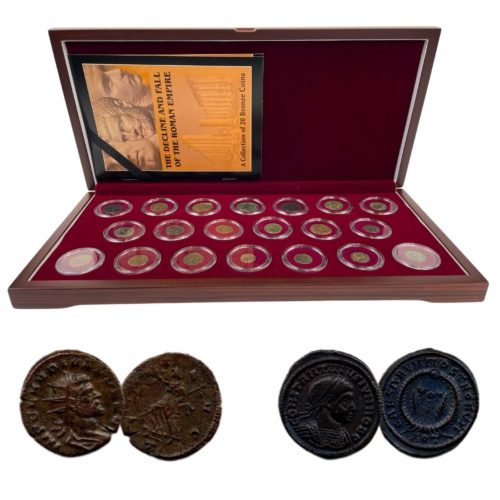Description
The European Renaissance was a cultural movement that bridged the gap between the High Middle Ages and the Industrial Revolution, comprising a sea change in thought that influenced literature, philosophy, art, music, politics, science, religion, and all other intellectual pursuits. It began in Italy in the 14th century, spreading to the rest of Europe over the next 250 years, and changed forever how we look at the world. The profound changes brought about during the Renaissance were progressive, coming to different parts of Europe at different times. This disparity is especially noticeable in the varying quality of coins minted in various countries. In places like Italy, the coins show a high degree of artistic design and manufacture, while in Russia, the coins reflect a crudeness typical of the earlier Medieval period: 1. Venice tornesello (13th-14th century) Coin of this vital Italian city-state features winged lion of St. Mark. 2. Bishopric of Salzburg pfennig (1387-1437) Struck by Johann II von Reisberg. 3. Polish-Lithuanian Commonwealth schilling (1587-1632) Issued during the reign of Sigismund III Vasa. 4. Russia wire money (1613-1645) Crude coins struck during the reign of Mikhail Romanov.

















